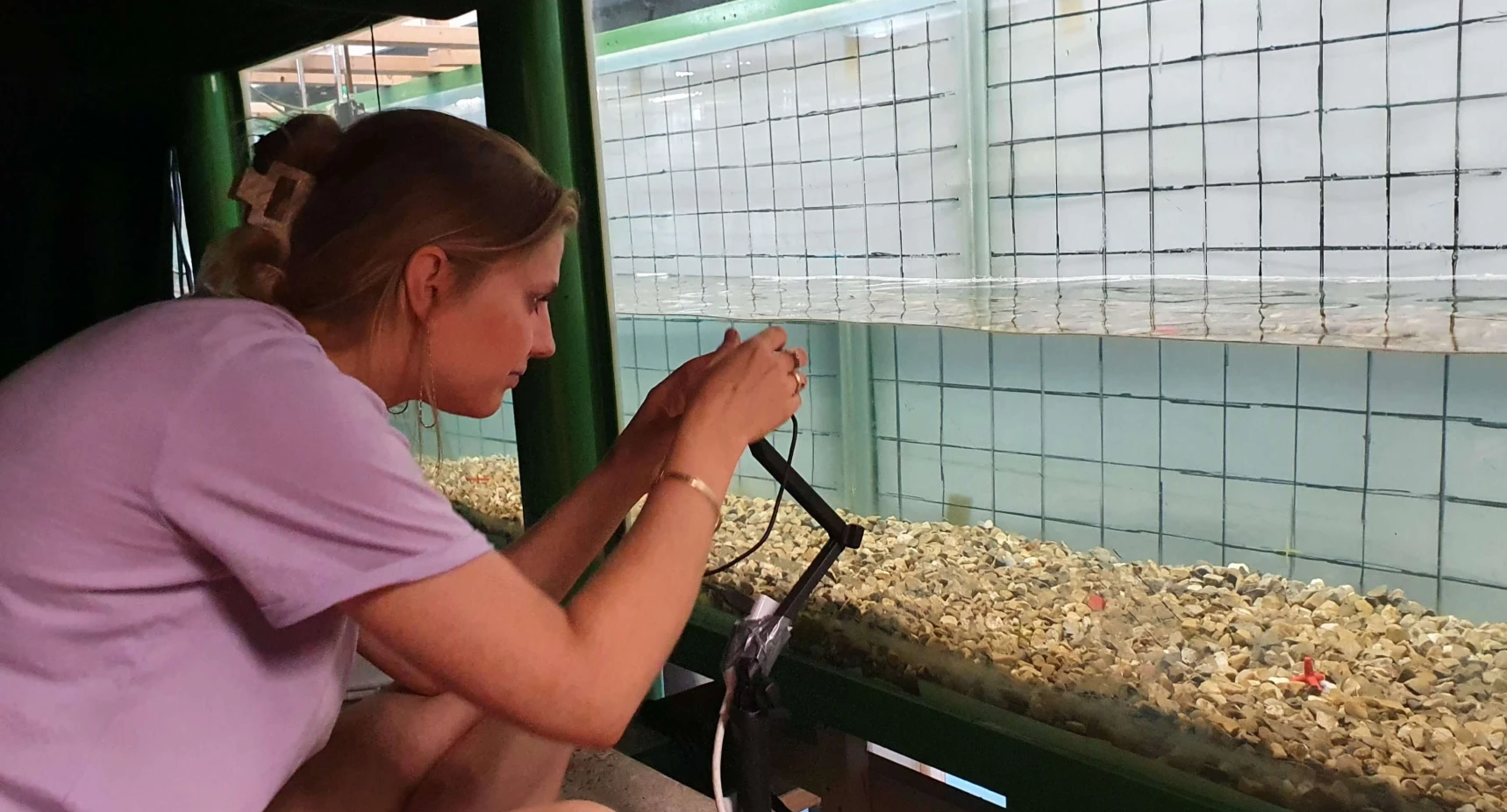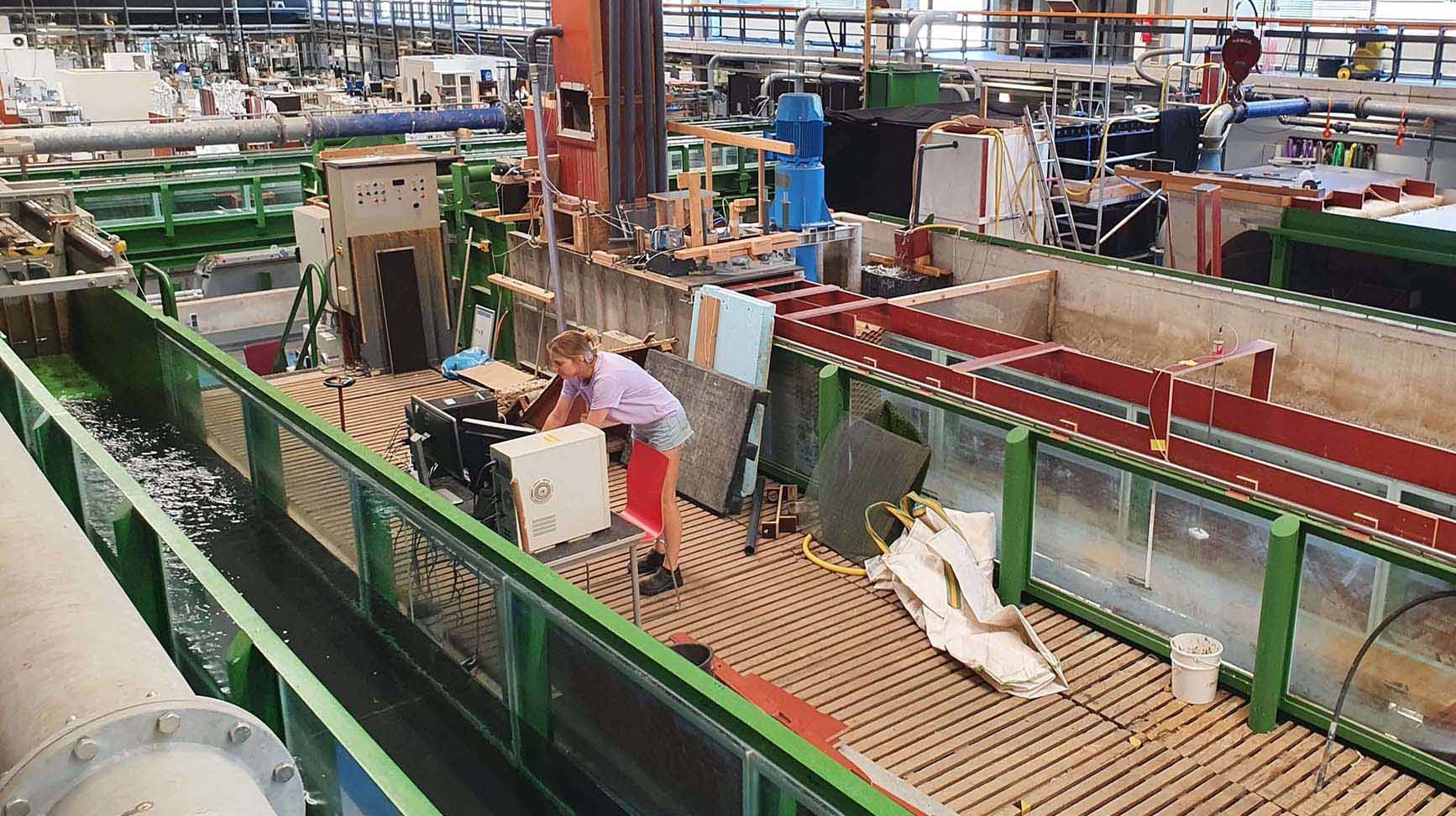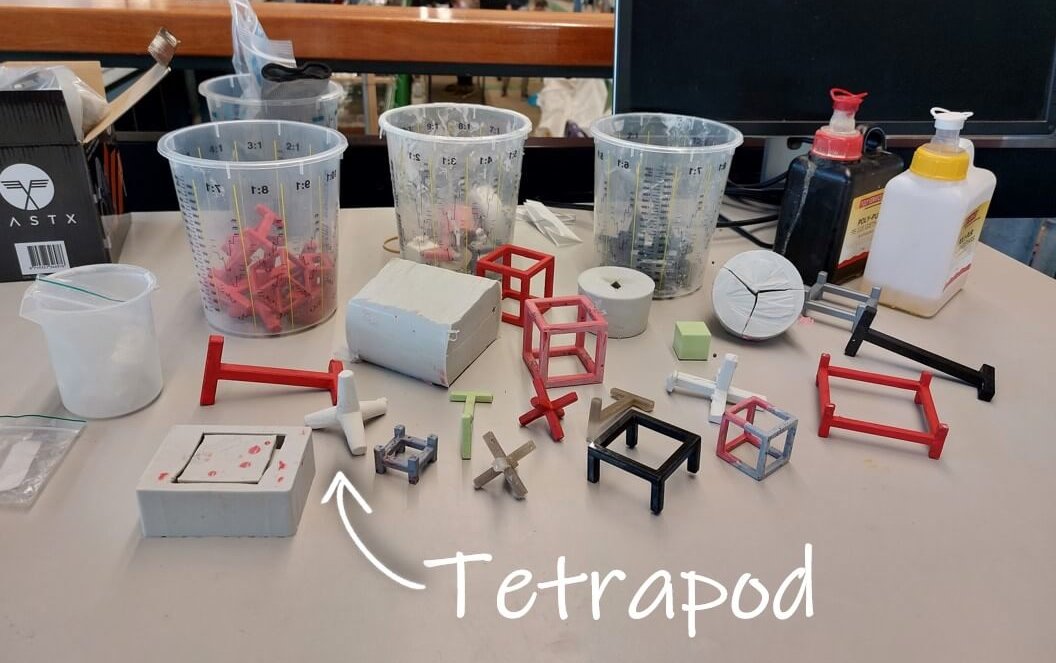Civil Engineering master student Eva Siderius has come up with a design for a small, droppable oyster broodstock structure which will make its way to the bottom of the sea and remain there even under extreme weather conditions. Eva is hoping the structure will kick-start the growth of oyster reefs on the ocean floor near offshore wind farms while improving the North Sea’s biodiversity at the same time.
What exactly did your research consist of?
I investigated the possibility of designing an oyster broodstock structure which could sit on the scour protection around the foundations of offshore wind farms. An oyster broodstock structure holds live adult oysters which then kick-start the development of an oyster reef on the bottom of the sea. These structures exist already but they are very big (1.5m x 1.5m) and heavy. They are expensive to install and you need to use a crane which can present complications in itself.
To make the process easier I designed broodstock structures that can be dropped into place from a vessel. These will then land on the scour protection around the turbines where they will stay in a stable position for the life span of the turbine, which is about twenty years.
What methods did you use?
I started with a design study. Based on reef structures, wave breakers and the ‘preferences’ of oysters, I came up with a number of shapes and printed them in 3D. I then predicted their behaviour using a numerical model. I followed that up with experiments to test the predictions. That meant three aspects of the model’s behaviour had to be within certain parameters. Spread during the drop had to be minimal and the structure shouldn’t roll over too much and hit the sides on landing. Last but not least, the structure had to remain stable under stormy conditions.
What did you look forward to most during the research?
I was really keen on doing the experiments in the Waterlab. It was quite something to be able to use the massive Delta flume! I liked the hands-on aspect of the work. It’s really different from working on your computer of course. And there’s the excitement of finding out how the trials panned out. I really hoped my calculations would match the test results.
What was your biggest challenge?
Making the prototypes turned out to take much longer than I had anticipated. I think I underestimated the making process, thinking it would turn out ok right away. But unfortunately that wasn’t the case…I had to try out a lot of composites before I found one that worked.
What is the most important thing you learned?
I learned that I had retained much of what I had studied. I used to think I would probably forget a lot of stuff, or would have no idea how to apply some of the things I had learned.
What did you enjoy most?
I was really happy when it turned out that my prototypes remained stable during the tests. I had been quite nervous about that because my calculations showed conflicting values. So anything could have happened!
What is the next step in your research?
Based on the circumstances that I selected, and the subsequent experiments, I was left with a structure that fits the bill. It’s called the Tetrapod. Droppable broodstructures are offered via tender. If a Van Oord tender wins there’s a good chance it will be installed in the North Sea. But there will have to be additional testing to see which one of the designs is best suited to the circumstances at a particular location.
What about your own plans?
I don’t really have a clue yet what I’ll do when I graduate... I did discover that I really like to alternate research with fieldwork or implementation. I like to see how things work in practice, and that is something you get ample opportunity for in Civil Engineering. It’s something I will look for in my search for a great job. But first I’ll be going on a very long holiday after my graduation ;-)
Related subjects
What did you learn during your Civil Engineering Bachelor studies that helped you?
One of the things we did during the bachelor, was make concrete, and finding out which mix ratio made for the strongest final product. For my MSc thesis I designed various prototypes that also had to be made in concrete, so my earlier experience stood me in good stead. My Bachelor also offered a number of water related subjects, such as Fluid Mechanics. That gave me the basics about water movement and how objects behave in water. It got me really interested in the hydraulic engineering side of things.
Which elements from your MSc Civil Engineering were you able to apply?
A lot of very diverse subjects, such ‘Bed, Bank & Shore protection’ about the behaviour of scour protection around wind turbines, came handy when writing my thesis, as well as ‘Ocean Waves’, about the behaviour of waves at a certain depth and its effect on a descending structure.
I also had to learn things outside my Master, such as design methodology. For that, I had to plough my way through a number of books on industrial design. I really enjoyed how integrated my project was, and how that enables you to pick up things from other disciplines.







